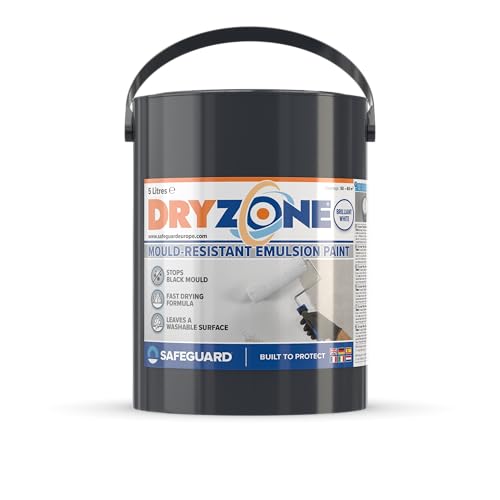Introduction to Anti-Mould Paint: What You Need to Know
Understanding Anti-Mould Paint
Anti-mould paint serves a specific purpose: it not only provides a decorative finish but also actively works to prevent the growth of mould and mildew on walls and ceilings. Areas prone to moisture, such as bathrooms, kitchens, and basements, can benefit significantly from this type of paint. Unlike standard paint, anti-mould formulations contain additives that inhibit the development of mould spores, ensuring your surfaces remain clean and fresh.
How It Works
This specialised paint creates a barrier against humidity, which is the main factor that encourages mould growth. By using anti-mould paint, we’re not just covering unsightly spots but also tackling the underlying moisture issue that often leads to mould infestations. It’s the perfect solution for homes that experience high humidity levels.
Why Choose Anti-Mould Paint for Your Home?
Protecting Your Health
Choosing anti-mould paint is also about safeguarding your health. Mould can trigger allergies and respiratory problems, making it crucial to utilise products that prevent its formation in the first place. With anti-mould paint, we are taking a proactive step to ensure a healthier living environment for ourselves and our families.
Aesthetic Benefits
In addition to its health benefits, anti-mould paint allows us to maintain the aesthetic appeal of our homes. No one wants to see ugly stains on their walls, and with this type of paint, we can effortlessly achieve a beautiful finish while ensuring that our walls remain free from mould. This is especially important in visible areas of the home, where presentation matters.
Key Features to Look for in Anti-Mould Paint
Mould Resistance
When selecting anti-mould paint, we should prioritise products boasting strong mould resistance. Look for paints that explicitly state their ability to prevent mould growth, as this is the primary function we expect.
Durability and Washability
Another critical feature is durability. We want a product that can withstand regular cleaning and is resistant to fading over time. Washable paints make it easy to wipe off any stains and maintain a tidy appearance, which is particularly beneficial in households with children or pets.
Finish Options
Don’t overlook the finish options available. Anti-mould paints come in various finishes, such as matt, satin, or gloss. While the choice is mainly aesthetic, certain finishes may be more suitable for specific environments—glossy finishes are typically more resistant to moisture, making them ideal for wet areas.
Step-by-Step Guide to Applying Anti-Mould Paint Successfully
Preparation is Key
Before applying anti-mould paint, proper surface preparation is essential. Start by cleaning the surfaces thoroughly to remove existing mould, dirt, and grease. We can use a mould cleaner or a solution of bleach and water, ensuring we wear protective gloves and a mask during this process.
Priming the Surface
Once the surface is clean and dry, applying a suitable primer can enhance the paint’s adhesion and effectiveness. We recommend a primer specifically designed for mould resistance, as this will provide an added layer of protection.
Applying the Paint
When it comes to the actual application of the anti-mould paint, we advise using a brush or roller for even coverage. It’s crucial to follow the manufacturer’s instructions regarding drying times and the number of coats needed for optimal results. Typically, two coats are recommended for full protection.
Top Recommendations for Anti-Mould Paints in the Market
Leading Brands We Trust
There are several reputable brands that specialise in anti-mould paints, providing a variety of options tailored to different needs. Brands like {Brand A}, {Brand B}, and {Brand C} are known for their quality and effectiveness. We suggest considering factors such as ease of application, finish, and customer reviews when making your choice.
Consider Your Specific Environment
When selecting a product, remember to consider the specific conditions of the area you intend to paint. Bathrooms may require specific formulations designed to withstand high humidity, while kitchens may benefit from paints that resist grease and stains. Tailoring your choice to the environment ensures optimal performance.


















